In early July, the FDA released an alert about a possible connection with Dilated Cardiomyopathy (DCM) in dogs fed “grain-free” diets. The release understandably caused quite a stir among pet parents who for years have believed such diets were preferable. The following post digs a little deeper surrounding this issue.
Clarifying the Confusion: Grain Free Recipes and the Recent FDA Report
Why is this an issue? On July 12, 2018, the U.S Food & Drug Administration (FDA) issued an alert regarding a possible connection with Dilated Cardiomyopathy (DCM) in dogs fed “grain free” diets. There has been much confusion and second-guessing among pet owners, retailers and various pet food brands that produce and sell these diets. The issue has affected a small population of dogs (less than 100). There has not been a direct link established regarding the cause, but diet is a suspected component along with animal genetics at this point.
What should pet food manufacturers consider doing to address this issue? The balance of bioavailable methionine and cysteine are of critical importance. All nutritionists should be evaluating their diets for these key amino acids. Canine diets should have adequate levels of naturally occurring methionine, cysteine and taurine.
The RAWZ Recipes (It’s Not Just About the Taurine) Supplementation with taurine may appear to be the easiest approach. However, this may mask the underlying issue of inadequate key amino acids that may ultimately result in other diseases. It is better to remain focused on the root cause and solve the issues with a sound and prudent approach of an encompassing balanced, superior nutritional profiles. RAWZ has high protein efficiency ratios because it is 100% rendered free. Our protein and amino acid profiles are better retained due to less processing.
DO YOU KNOW WHAT YOUR PET IS REALLY EATING? DOWNLOAD OUR GUIDE TO LEARN HOW TO READ AND DECODE THOSE TRICKY PET FOOD LABELS. >
RAWZ is 100% Rendered Free – Dehydrated proteins and real meats contain higher levels of naturally occurring methionine, cysteine and taurine, compared to some excessively processed meals, such as chicken meal or fish meal.
Taurine supplementation has always been added to all RAWZ dry recipes-both canine and feline.
Additional Information
Has there ever been a similar situation with DCM and dogs? Yes. In late 1990’s there were a number of dogs in a few breeds reported with DCM in which diet may have been associated. In these cases, the suspected diet type was based on lamb meal and rice and formulated for maintenance. The dogs were generally large breeds (e.g. Newfoundlands). It was postulated that low circulating taurine may be due to inadequate taurine syntheses in the liver and this may serve as an early indicator of shortcomings in sulfur amino acid supply (methionine and cysteine) for this and other metabolic functions (Backus et al., 2006).
Was there something inherent in the lamb meal and rice diets from these studies that would suggest a similar issue for the current FDA alert? It was demonstrated by Johnson et al. (1998) that the cysteine availability in lamb meal can be quite low (<50% bioavailable). This may be attributed to the heat associated with the rendering process or the high concentration of structural proteins (wool and tendons) which are poorly digested. For the rice and rice co-products such as rice bran, it was demonstrated that these ingredients can decrease whole-blood taurine in cats (Stratton-Phelps et al., 2002), and this may be the result of the greater bile acid binding properties of rice bran (Kahlon and Woodruff, 2003) versus the other fibers.
Is there something inherently problematic with grain free diets? First it must be understood that taurine is synthesized from sulfur amino acids methionine and cysteine in the liver. If there is an inadequate supply of these amino acids, then taurine may be depleted. Legume seeds like peas, lentils and chickpeas have low levels of methionine and cysteine and plants do not produce taurine. Thus, these ingredients must be paired with complementary proteins like those from animal sources, or plant sources with offsetting concentrations of these key amino acids or supplemented with synthetic amino acids. There are no reports in the literature evaluating the pulses or tubers on canine or feline taurine levels. However, in a study reported form 1995 (Kim et al.) there was some indication that soybean (a legume seed) protein decreased taurine in feline plasma. This was thought to result from increased fecal excretion of taurine and bile acids and was not considered to work outside the effect of fermentation on deconjugation of taurocholate in the colon. Although soluble/fermentable fibers may have a detrimental effect on taurine levels in the gastrointestinal tract (Ko and Fascetti, 2016). As it turns out, legume seeds can be rich in oligosaccharides which could at higher levels lead to more fermentation and ultimately lower taurine.
What should we consider doing to address this issue? First, the diets and dogs identified in these alerts are very few. There may be some common aspects to the previous issues in the 1990’s that have been overlooked in recent times. It is unlikely that all grain free diets are implicated. Possibly only a few and for only dogs predisposed to the condition. Further, the balance of bioavailable methionine and cysteine are of more importance. Nutritionists should be evaluating the diets for these key amino acids.
References: FDA. July 12, 2018. FDA Investigating Potential Connection Between Diet and Cases of Canine Heart Diseasehttps://www.fda.gov/animalveterinary/newsevents/cvmupdates/ucm613305.htm acce ssed 27Aug2018 Backus, R.C., Kwang, S.K., Fascetti, A.J., Kittleson, M.D., MacDonald, K.A., Maggs, D.J., Berg, J.R., Rogers, Q.R. Low plasma taurine concentration in newfoundland dogs is associated with low plasma methionine and cyst(e)ine concentrations and low taurine synthesis (2006) Journal of Nutrition, 136 (10), pp. 2525-2533. Johnson, M.L., Parsons, C.M., Fahey, G.C., Jr., Merchen, N.R., and Aldrich, C.G. 1998. Effects of species raw material sources, ash content, and processing temperature on amino acid digestibility of animal by-product meals by cecectomized roosters and ileally cannulated dogs. J. Anim. Sci. 76:1112-1122 Stratton-Phelps, M. Backus, R.C, Rogers, Q.R., and Fascetti, A.J. 2002 Dietary rice bran decreases plasma and whole-blood taurine in cats. J. Nutr 132:1745S-1747S. Kahlon, T.S, Woodruff. C.L. 2003 In vitro binding of bile acids by rice bran, oat bran, barley, and B-glucan enriched barley. Cereal Chem 80:260-263. Kim S.W., Morris, J.G., and Rogers, Q.R. 1995. Dietary soybean protein decreases plasma taurine in cats. J. Nutr 125:2831-2837. Ko, K.S., Fascetti, A.J. 2016. Dietary beet pulp decreases taurine status in dogs fed low protein diet. J. Ainm Sci Technol. 58:29-39.





